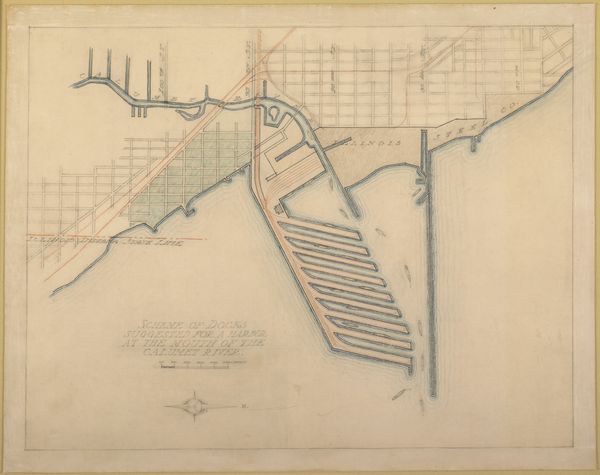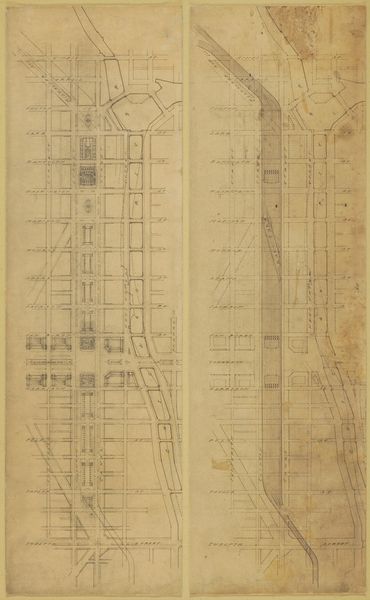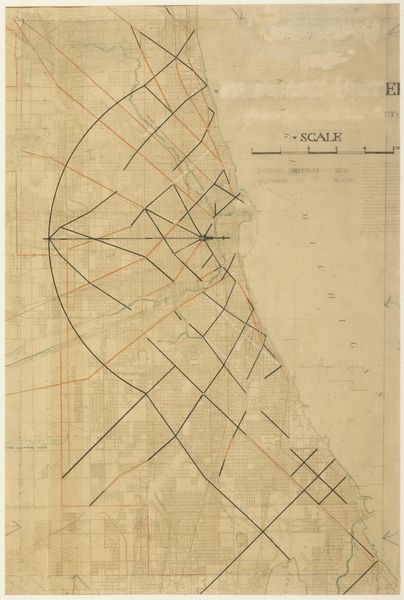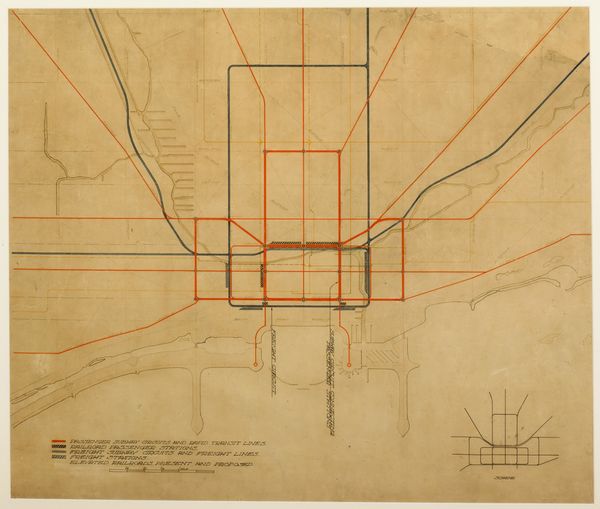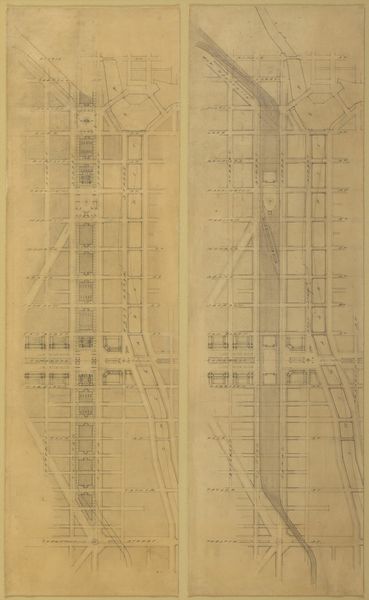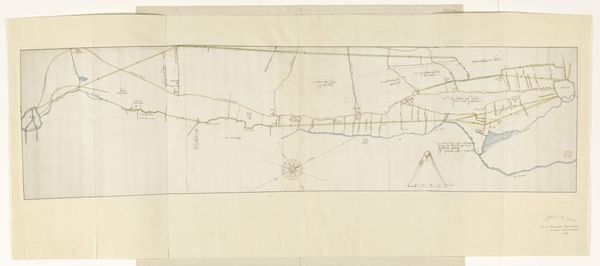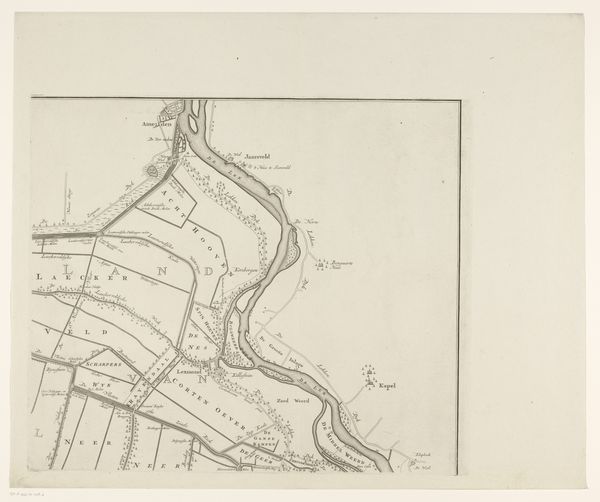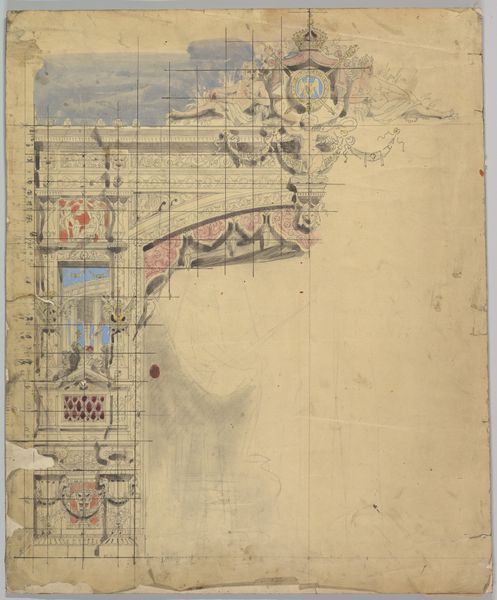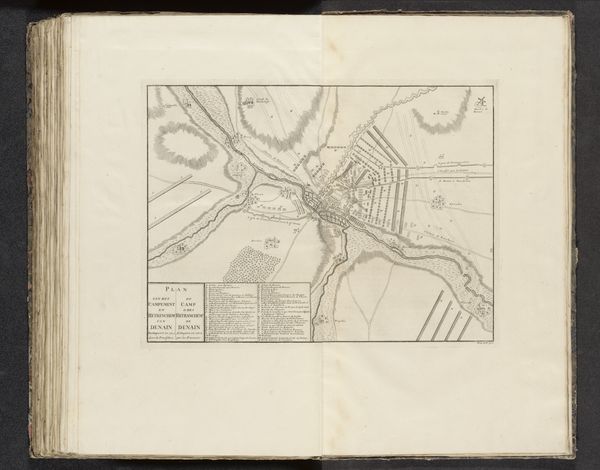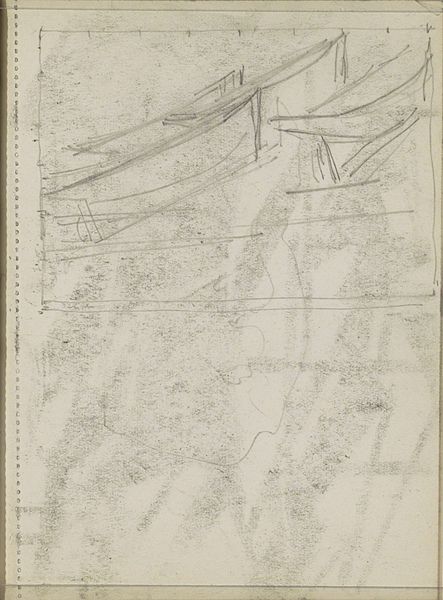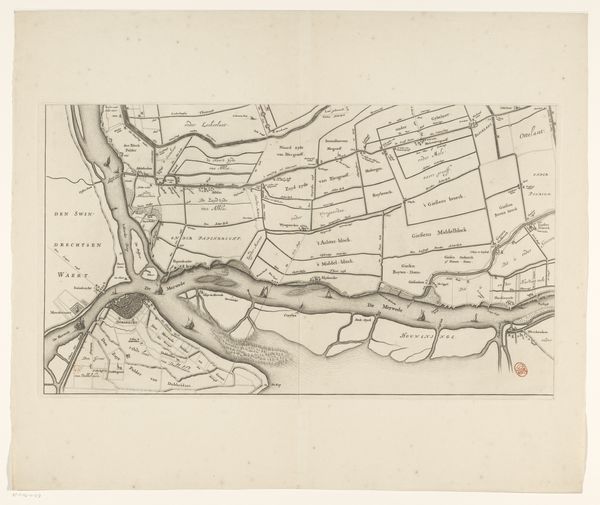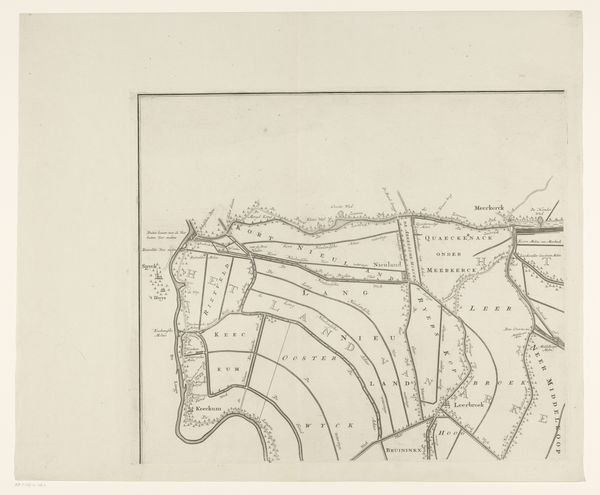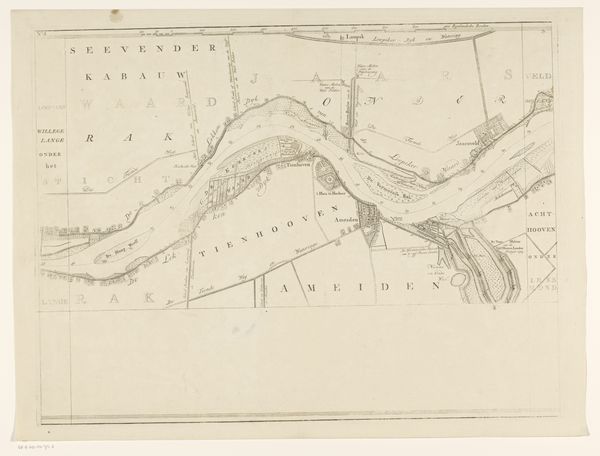
Plate 71 from The Plan of Chicago, 1909: Chicago. Sketch Diagram of Docks Suggested at the Mouth of the Chicago River for Package Freight Steamers. 1909
0:00
0:00
drawing, print, paper, architecture
#
drawing
# print
#
etching
#
paper
#
cityscape
#
modernism
#
architecture
#
calligraphy
Dimensions: 107.6 × 85.4 cm (42 1/2 × 33 3/4 in.)
Copyright: Public Domain
Curator: Looking at this print, "Plate 71 from The Plan of Chicago," a 1909 etching on paper by Daniel Hudson Burnham, I am immediately struck by its blend of cool detachment and utopian ambition. It's quite mesmerizing. Editor: It's incredibly detailed. I can't help but think about the sheer labor involved in its creation. Think of the draftsmen meticulously rendering each line and shape, each potential dock and waterway! The materiality, the paper itself becomes a site of industrial possibility. Curator: Absolutely. Burnham's Plan was much more than just a pretty picture, it became a roadmap to transforming Chicago's physical and social landscape. The placement of docks here isn’t just about infrastructure, it reflects anxieties surrounding freight traffic at the turn of the century, urban crowding, and disease. Editor: Right. It's about managing flows – of goods, people, capital – a totalizing vision for control exerted on a city’s basic functions. The choice to use print, etching in particular, as a mode of distributing his radical design proposals meant Burnham was trying to democratize design and solicit support from everyday citizens to reshape their physical spaces. Curator: I agree. Furthermore, The Art Institute played a key role in promoting this plan; hosting exhibits that presented Burnham's visions to Chicago's elite. They framed him as a progressive reformer rather than some radical reshaping the existing power structures of Chicago. Editor: That's key. Museums aren't neutral spaces; their architecture, funding and patronage reflects the priorities of those with social, economic, and political capital. And institutions like the Art Institute actively molded and shaped Burnham’s image for public consumption. It gives me so much to consider. Curator: Indeed. Thinking about urban development always brings in complex power dynamics. Editor: Looking closer has changed my appreciation for all the subtle and obvious efforts invested. Thanks to the material details and understanding more historical factors, I find this diagram all the more meaningful.
Comments
No comments
Be the first to comment and join the conversation on the ultimate creative platform.
